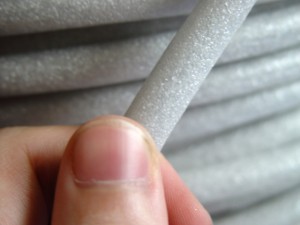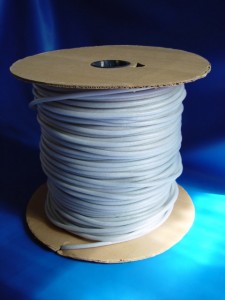Insulate Buildings, Seal Foundations and Fix Cracks With Foam Backer Rod Expansion Joint Filler
In cinema, theater and television, the big name movie stars and actors are the ones who often receive the majority of praise for a production’s success. However, for every actor on the screen or stage, there are multitudes of individuals working behind camera and curtain to ensure that the 1,000,000 little things that can go wrong do not. The world of construction also shares this imbalance of recognition. People marvel at the polished and shimmering materials used on the outside of buildings or the detailing in their décor. These things are what grab our attention, while there are many materials that have gone into the construction of these buildings that play incredibly important roles in the longevity and integrity of a structure. One of these materials is polyethylene foam backer rod.
Used in home construction, sidewalks and masonry work, backer rod, or expansion joint filler as it is also known, increases the performance and longevity of every application it is used in and saves money as well. With all the variables that go into construction like ground angle, weather and potential weight distribution, concrete is often poured into sections rather than one large form. Because of its hardness and inflexibility, these tiles or sections of concrete have small gaps or joints between them that allow for the movement of the slab as it expands, contracts and settles. Left untreated however, they will provide more harm than benefit, allowing moisture to get into the joint, eventually causing damage, especially in areas where freezing occurs. It is in these joints, along with sealant, where backer rod expansion joint foam performs its role.
A strip of the typically cylindrical filler foam is wedged between the gap in two surfaces before sealant or caulk is applied. Utilizing expansion joint filler material does not permit a three-way bond between the two parallel surface edges and the substrate that the material is placed upon. By filling the gap down to the substrate with sealant only, flexibility is reduced and expansion or compression can cause the sealant to rip away damaging the concrete or substrate. Caulking will not adhere to the polyethylene rod, so a lateral two-way bond is formed between the two surface materials. This joint filling material can be found at The Foam Factory in many diameters and roll lengths for finishing a project of any size.
In addition to the potential damage to the concrete and substrate layers caused by completely filling the joint, using that much sealant in every crack is a waste of material. These sealants are costly materials, and even if filling an entire joint wasn’t a poor construction technique, it would still be an overly expensive one. To prevent this damage and save money, rods of smooth, closed-cell polyethylene filler are packed into the gaps. This affordable foam filler takes up a majority of the open space in the joint, with its compressible, durable, moisture resistant form. When the sealer is applied to the joint, it rests on top of the foam backer without adhering to it, only allowing a bond between the concrete while using a minimal amount of material. That two-point bond allows the caulk to flex like a rubber band with the natural movements of the concrete, maintaining its waterproof seal.
This technique is simulated in log home construction as well, in a process called chinking. Instead of between horizontal slabs of concrete, foam insulation backer rod is inserted into the spaces between every log, insulating the home, and preventing the entrance of moisture and even insects. A sealant is applied over the backer rod forming a waterproof two-point bond that allows the gentle settling of the logs without cracking. Gap filler is also used in conjunction with sealant to fill cracks in log homes that are becoming an issue, helping to slow or even stop the progression of the split and structural damage.
The Foam Factory stocks the most frequently used sizes of foam rod, in spools as large as 4,000 feet long or in sizes as small as ¼ inch in diameter. The largest spooled diameter is 1-1/4 inch in 400 foot lengths, with six other diameter and spool lengths between the two sizes. Because backer rod is almost always trimmed to fit within joints, long strands are rarely needed but the large spools allow long joints to be filled consistently. For large jobs, many rolls can be ordered at once. On small projects, half spools are offered and The Foam Factory even takes orders by the lineal foot for those who know exactly how much filler they need. For joints and cracks greater in width than 1-1/4 inches, unspooled cylinders can be ordered, from 1-1/2 inches in diameter, up to 6 inches. These come in lengths of 17, 35 and 70 inches. No matter the size of the job, The Foam Factory has the materials you need.
So, the next time you stand in awe of a sky scraper or go for a walk on a city sidewalk, keep in mind that it isn’t just the glitz and glamor that makes something what it is, but sometimes the things behind the scenes that fill in all the cracks.
Tags: Backer Rod, Building Material, Closed-Cell Foam, Expansion Joint Filler, Polyethylene
Posted in Industrial, Other Products




Plz give me ur contact nub
Contact us here.Contact us here.Contact us here.